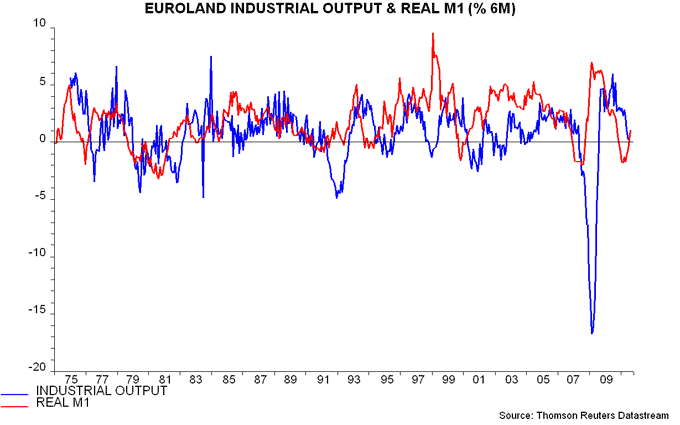The Eurozone manufacturing purchasing managers’ new orders index fell further to 43.7 in October, a level previously reached on only two occasions since the inception of the survey in the late 1990s, both associated with recessions.

Current economic weakness was foreshadowed by a decline in real narrow money M1 starting in late 2010 and documented in several previous posts. Real M1 contraction has preceded every recession since the mid 1970s (at least). The alarm bells were ignored by the ECB’s chief economist Juergen Stark, supposedly guardian of its “monetary pillar", who led the suicidal charge towards higher interest rates this spring and is now making for the exit as the fruits of his handiwork become apparent.
The alarm bells were ignored by the ECB’s chief economist Juergen Stark, supposedly guardian of its “monetary pillar", who led the suicidal charge towards higher interest rates this spring and is now making for the exit as the fruits of his handiwork become apparent.
Real M1 has recovered recently, increasing by 1.1% (not annualised) in the six months to August. The end of previous recessions, however, has been signalled by six-month growth rising to at least 2%. It is doubtful, moreover, that the pick-up will be sustained given financial market weakness and ECB inertia.
Sig. Draghi, in other words, needs to overrule the hawks and cut interest rates swiftly to head off a prolonged recession that would undermine any rescue package concocted this week.